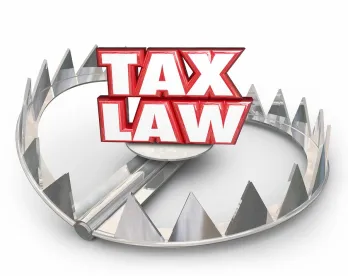Background
As discussed in our prior Client Alert, new Internal Revenue Code Section 4960 (“Section 4960”) imposes a 21 percent excise tax on “excess remuneration” and “excess parachute payments” paid by an organization that is exempt from tax under section 501(a) of the Code to certain “covered employees” during a taxable year. Section 4960 applies for taxable years beginning after December 31, 2017. For employers on a calendar year tax year, this means Section 4960 took effect with respect to amounts paid in 2018. As the deadline to report and pay the excise tax approaches (May 15, 2019, is the deadline for calendar year taxpayers), tax-exempt employers have questions about how Section 4960 is meant to be applied. IRS Notice 2019-09 (the “Notice”), published at the start of 2019, provides guidance on the application of Section 4960 and sheds light on, among other things: (i) what is an applicable tax-exempt employer, (ii) who is a covered employee, (iii) what constitutes excess remuneration and excess parachute payments, and (iv) how to report and pay the excise tax. Until the Treasury Department and IRS issue regulations implementing Section 4960, the Notice describes “a good faith, reasonable interpretation of [S]ection 4960” on which taxpayers may rely.1
Getting Ready for May 15, 2019 (for ATEOs whose taxable year is the calendar year)
For tax-exempt employers that are looking toward May 15, 2019, and wondering how Section 4960 will affect them, we’ve outlined several steps that an employer may want to take now to prepare. This article is the first in a series of alerts providing additional detail about certain key concepts in the Notice that may help guide an employer’s analysis.
-
Determine if your organization is an applicable tax-exempt employer (“ATEO”) subject to Section 4960. The definition of ATEO is discussed below.
-
Identify any related organizations that will need to be taken into account to compile the ATEO’s list of covered employees and to determine the total remuneration paid and excess parachute payments made to covered employees. The related organization rules are discussed below.
-
Compile the list of covered employees. To prepare the initial list, an ATEO will need to identify both covered employees for 2018 and covered employees for 2017 (i.e., an ATEO may have more than five covered employees on its initial list). Identification of covered employees for 2017 is necessary due to the “once a covered employee, always a covered employee” rule (i.e., if an employee is a covered employee for a taxable year beginning after December 31, 2016, he or she will always be a covered employee for purposes of Section 4960). Remuneration from related employers needs to be taken into account for this purpose, so ATEOs will need to obtain compensation data from all related organizations. The definition of covered employee and the definition of remuneration will be discussed in Part II of this Client Alert series.
-
Determine if any covered employee received excess remuneration during 2018. The rules for determining excess remuneration will be discussed in Part III of this Client Alert series.
-
Determine if any covered employee received an excess parachute payment during 2018. The rules for identifying and quantifying the value of excess parachute payments will be discussed in Part III of this Client Alert series.
-
If excess remuneration was paid and/or excess parachute payments were made to any covered employee in 2018, calculate the amount of excise tax owed by the ATEO and each related organization. The rules for calculating the excise tax and apportioning liability among related organizations will be discussed in Part III of this Client Alert series.
-
File Form 4720 to report and pay the excise tax. The filing requirements for Form 4720 will be discussed in Part III of this Client Alert series.
Applicable Tax-Exempt Organizations and Related Organizations
Applicable Tax-Exempt Organizations
Section 4960 applies to ATEOs and certain related organizations. In general, an ATEO is any organization that is exempt from tax under section 501(a) of the Code (such as a university, a health system or a cultural institution). In addition, (i) farmers’ cooperative organizations described in section 521(b)(1) of the Code, (ii) organizations that have income excluded from taxation under section 115(1) of the Code (such as a political subdivision of a state and some (but not all) public colleges and universities), and (iii) political organizations described in section 527(e)(1) of the Code (such as a political party or PAC) are also ATEOs.
As noted above, a governmental entity that excludes income from taxation under section 115(1) of the Code or is exempt from tax under section 501(a) of the Code is an ATEO. If a governmental entity is not recognized as exempt from taxation under section 501(a) of the Code and does not exclude income from gross income under section 115(1), the entity would not be considered an ATEO. The Notice confirms that a governmental entity with a letter recognizing its tax-exempt status under section 501(a) of the Code may relinquish its status as provided in IRS Revenue Procedure 2018-5 and therefore cease to be an ATEO.
Related Organizations
A person or a governmental entity is a related organization to the ATEO for purposes of Section 4960 if such person or governmental entity (i) controls or is controlled by the ATEO, (ii) is controlled by one or more persons that control the ATEO, (iii) is a supported organization (as defined in section 509(f)(3) of the Code) with respect to the ATEO (such as a hospital or community foundation), (iv) is a supporting organization described in section 509(a)(3) of the Code with respect to the ATEO (such as a health system parent or a public charity that is aligned with a community foundation and supports it), or (v) in the case of an ATEO which is a voluntary employees’ beneficiary association described in section 501(c)(9) of the Code, establishes, maintains, or makes contributions to such voluntary employees’ beneficiary association.
For purposes of determining related organizations, the term control means:
-
In the case of a nonprofit organization (or other organization without owners or persons who have beneficial interests), control exists where (i) more than 50 percent of the directors or trustees of the ATEO or nonstock organization are either representatives of, or are directly or indirectly controlled by, the other entity, or (ii) more than 50 percent of the directors or trustees of the ATEO or nonstock organization are either representatives of, or are directly or indirectly controlled by, one or more persons that control the ATEO.2 A representative is a trustee, director, agent or employee, and control includes the power to remove a trustee or director and designate a new trustee or director.
-
In the case of a corporation, ownership (by vote or value) of more than 50 percent of the stock of a corporation.
-
In the case of a partnership, ownership of more than 50 percent of the profits interest or capital interest of the partnership.
-
In the case of a trust, ownership of more than 50 percent of the beneficial interests in the trust.
-
For purposes of applying the control test, the constructive ownership principles under section 318 of the Code are applied.
Example: X, Y and Z are nonprofit organizations and ATEOs. Sixty percent of Y’s directors are representatives of X, and 60 percent of Z’s directors are representatives of Y. X is a related organization with respect to Y (and vice versa) because more than 50 percent of Y’s directors are representatives of X. Similarly, Y is a related organization with respect to Z (and vice versa). Applying constructive ownership principles, X is deemed to control 36 percent of Z’s directors (60 percent of Y’s 60 percent control over Z). Because less than 50 percent of Z’s directors are representatives of or controlled by X, and absent any facts suggesting that X directly or indirectly controls Z, X is not a related organization with respect to Z.
What Next?
If you have questions about how the Section 4960 rules for determining ATEO status apply to your organization, or if you would like assistance in performing the ATEO analysis, contact a member of our Employee Benefits and Executive Compensation Team. If you have already determined that your organization is an ATEO, stay tuned for Part II of this Client Alert series, which will include discussion of how to identify your organization’s covered employees and how to determine what types of payments are included in remuneration for Section 4960 purposes.
1 The Notice also notes certain positions that are not a good faith, reasonable interpretation of Section 4960 (for example, it is not reasonable for an employer to take the position that an individual ceases to be a covered employee after a certain period of time).
2 Note that the test for control used for Section 4960 purposes aligns with the definition of “related organization” used for annual reporting on Form 990, rather than aligning with the test for control used in sections 414(b) and 414(c) of the Code for qualified plan purposes.






 />i
/>i

